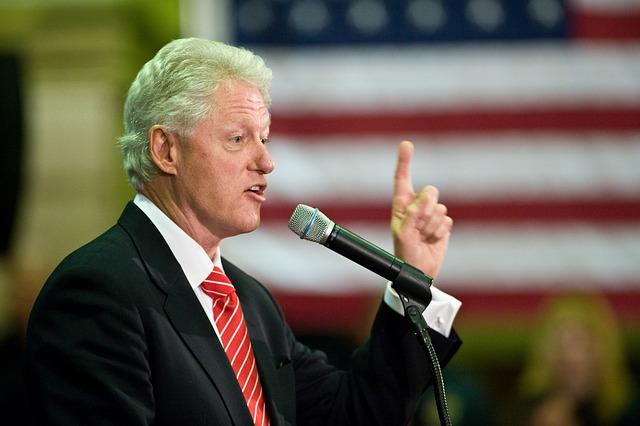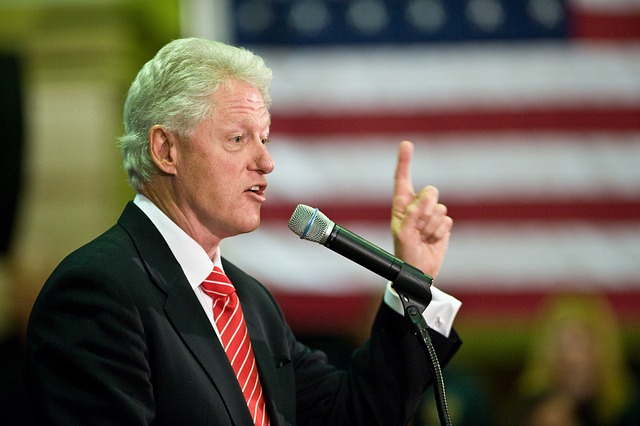

Photo Credit:Free image, Pixabay license
Pixabay
Presidents from both parties have long worked to cut government costs.For all the hullaballoo raised by Democrats about the unconstitutionality of the Department of Government Efficiency, cost-cutting efforts by U.S. presidents have been common since the end of World War II. Never have they been completely successful, but when they are even partially effective, prosperity and greater accountability of public servants to the public have resulted.
In terms of forensic analysis, DOGE is applying the simple and time-tested techniques of turnaround management — trying to identify the reasons for failing performance and rectify them. Structurally, DOGE is simply a renaming of President Barack Obama’s 2014 United Stated Digital Service, a group reporting to the Executive tasked with providing updated I.T. services to the federal government. President Donald Trump’s January 20, 2025 executive order is a deft nod to his predecessor.
Although more Republican presidents have been cost-cutters than Democrats, the two most successful budget-slashers to date have been Ronald Reagan, a Republican, and Bill Clinton, a Democrat. The biggest tax-cutters were John Kennedy, a Democrat, and Ronald Reagan and Donald Trump, btoh Republicans.
Ridiculing wasteful and counterproductive government programs is also nothing new. According to Ronald Reagan, “Government is like a baby: An alimentary canal with a big appetite at one end and no responsibility at the other.” Did you know that the Nixon administration inherited over half a million pounds of feathers, 1,850 pounds of opium, and 48 pounds of castor oil?
The federal sloppiness of the 1970s is puny compared to today’s rat’s nest. In addition to the bizarre list of USAID’s foreign spending, the Department of Defense, with the largest discretionary budget at $824 billion, failed its seventh audit. Multiple government programs are replete with payment errors and fraud, are maintaining vast empty buildings, and are spending (in the case of the Department of Treasury) more to make pennies than they are worth.
Only Republicans have articulated their concerns about the effects of unchecked growth of the federal government on the Constitutional Republic and its citizens. President Dwight Eisenhower did so in his 1961 Farewell Address to the nation, referencing the potential for abuse of freedom by the “military-industrial complex.”
A brief history of federal cost-cutting illustrates the intransigence of Congress and the federal blob to reform.
After succeeding two wartime presidents in 1952, Dwight Eisenhower’s administration was focused on foreign policy events rather than undoing the spending of the New Deal. Despite his fiscal conservatism, Eisenhower normalized both the welfare state and constant military preparedness. As historian Wilfred McClay points out in Land of Hope, as his second term came to an end in 1960, he warned about the generational ill effects of increasing national debt and the temptations of abuse of power stemming from a large standing army.
In his farewell address, Eisenhower stated, “We cannot mortgage the material assets of our grandchildren without risking the loss also of their political and spiritual heritage.”
John Kennedy’s short term in office reflected his progressivism and pragmatic attitude toward government overreach into Americans’ pocketbooks. As a result, he instituted the first reform of tax law in decades. His tax cuts jumpstarted a multi-year rise in GNP.
Richard Nixon attempted the first post-WWII cost-cutting efforts. In his first budgetary message, he said, “Personal freedom will be increased when there is more economy in government and less government in the economy.”
Nixon ended the Vietnam War and that bottomless pit of spending. But he faced Democrat majorities in the House and Senate that passed even more Great Society legislation, like the Occupational Health and Safety Act and a 15% hike in Social Security, which pushed non-defense spending from under 10% of GDP to 12% by 1972.
Nixon’s Cabinet, including OMB chief Caspar “Cap the Knife” Weinberger, targeted artifacts of outmoded Depression-era and unproductive Great Society programs. TIME Magazine noted in 1970 that Nixon’s cost-cutters planned to liquidate $750 million (non-inflation-adjusted) of surplus commodities. Also on the chopping block were the Jobs Corps, Model Cities, federal public high-rise housing projects better known for fostering crime than housing families, and civilian workers in the defense department.
Following Nixon’s 1972 landslide re-election, in which he won 60.7% of the popular vote, the White House went hard at the failing federal housing programs, 1930s crop subsidies, and the Highway Trust Fund. Faced with complete intransigence from Congress, Nixon used executive orders to delay and withhold spending. In 1974, Congress passed the Impoundment and Control Act to prevent the chief executive from exerting budgetary control against congressional wishes. Nixon was forced to resign in August 1974.
Ronald Reagan’s philosophy of “Reaganonmics” was based on four basic concepts: tax cuts, deregulation, reduced government spending growth, and tight monetary policy. The 1981 Economic Recovery Act slashed the top rate to 50% from 70%. Corporations created 20 million jobs. Interest rates dropped from over 20% to around 10%. Non-defense spending fell. He was re-elected in a landslide, demonstrating once again Americans’ overwhelming support for federal spending continence.
Reagan’s final report card was only a B. Due to the continuing Cold War, total government spending increased 69% from 1981, by shifting to defense from non-defense. The federal debt nearly tripled from $998 billion in 1981 to $2.857 trillion in 1989. However, because the economy grew rapidly, federal spending as a percent of GDP fell to 18.3% in 1989 from 19.6% in 1981, a modest improvement.
Bill Clinton likewise took on the government behemoth. At the beginning of his administration, he appointed his vice president, Al Gore, to do a “national performance review” and figure out how to have a federal government that “works better and costs less.”
In February 1993, he issued an executive order telling government agencies and departments to cut at least 4% of civilian employees over three years. In 1994, a Republican Congress approved the Federal Workforce Restructuring Act, allowing $25,000 buyouts. The federal workforce dropped by 252,000.
With the nudging of the Republican Congress, in 1996, Clinton signed welfare reform, the Personal Responsibility and Work Opportunity Reconciliation Act, which contained time limitations and work requirements. Aid to Families with Dependent Children recipients fell to 4.12 million in 2016 from 13.42 million in 1995, according to the Cato Institute.
Circling back to Obama’s U.S. Digital Services, what did they accomplish? Judging by their own December 2024 report, not much. Among their highlighted non-accomplishments were “centering the user,” “innovating continuity,” “tackling root causes,” and “building trust.”
Judging by Donald Trump’s rising popularity, Americans want the federal bureaucracy tamed and massively downsized. Regardless of party affiliation, most Americans agree with DOGE’s mission: “modernizing federal technology and software to maximize governmental efficiency and productivity.” DOGE’s success may result in the closure of worthless government programs that only Congress and their inside-the-Beltway cronies care about.
As Ronald Reagan quipped, “let’s close the place down and see if anybody notices.”
Linda R. Killian is a retired financial analyst and a local Republican chairman.
<img alt="Free image, Pixabay license" captext="Pixabay” src=”https://conservativenewsbriefing.com/wp-content/uploads/2025/02/doge-is-nothing-new.jpg”>
Image: Bill Clinton, via Pixabay.





